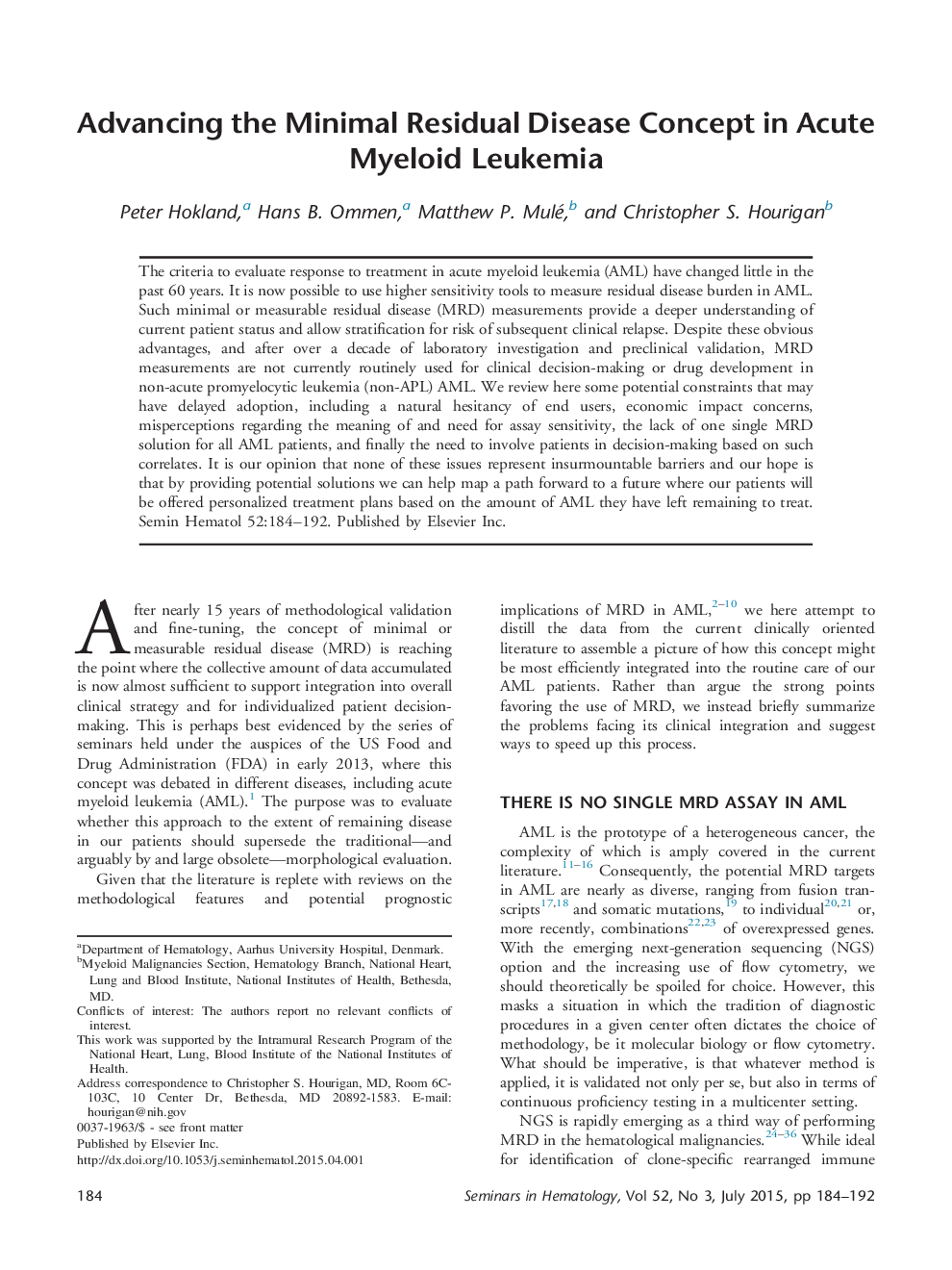| Article ID | Journal | Published Year | Pages | File Type |
|---|---|---|---|---|
| 3333455 | Seminars in Hematology | 2015 | 9 Pages |
The criteria to evaluate response to treatment in acute myeloid leukemia (AML) have changed little in the past 60 years. It is now possible to use higher sensitivity tools to measure residual disease burden in AML. Such minimal or measurable residual disease (MRD) measurements provide a deeper understanding of current patient status and allow stratification for risk of subsequent clinical relapse. Despite these obvious advantages, and after over a decade of laboratory investigation and preclinical validation, MRD measurements are not currently routinely used for clinical decision-making or drug development in non-acute promyelocytic leukemia (non-APL) AML. We review here some potential constraints that may have delayed adoption, including a natural hesitancy of end users, economic impact concerns, misperceptions regarding the meaning of and need for assay sensitivity, the lack of one single MRD solution for all AML patients, and finally the need to involve patients in decision-making based on such correlates. It is our opinion that none of these issues represent insurmountable barriers and our hope is that by providing potential solutions we can help map a path forward to a future where our patients will be offered personalized treatment plans based on the amount of AML they have left remaining to treat.
